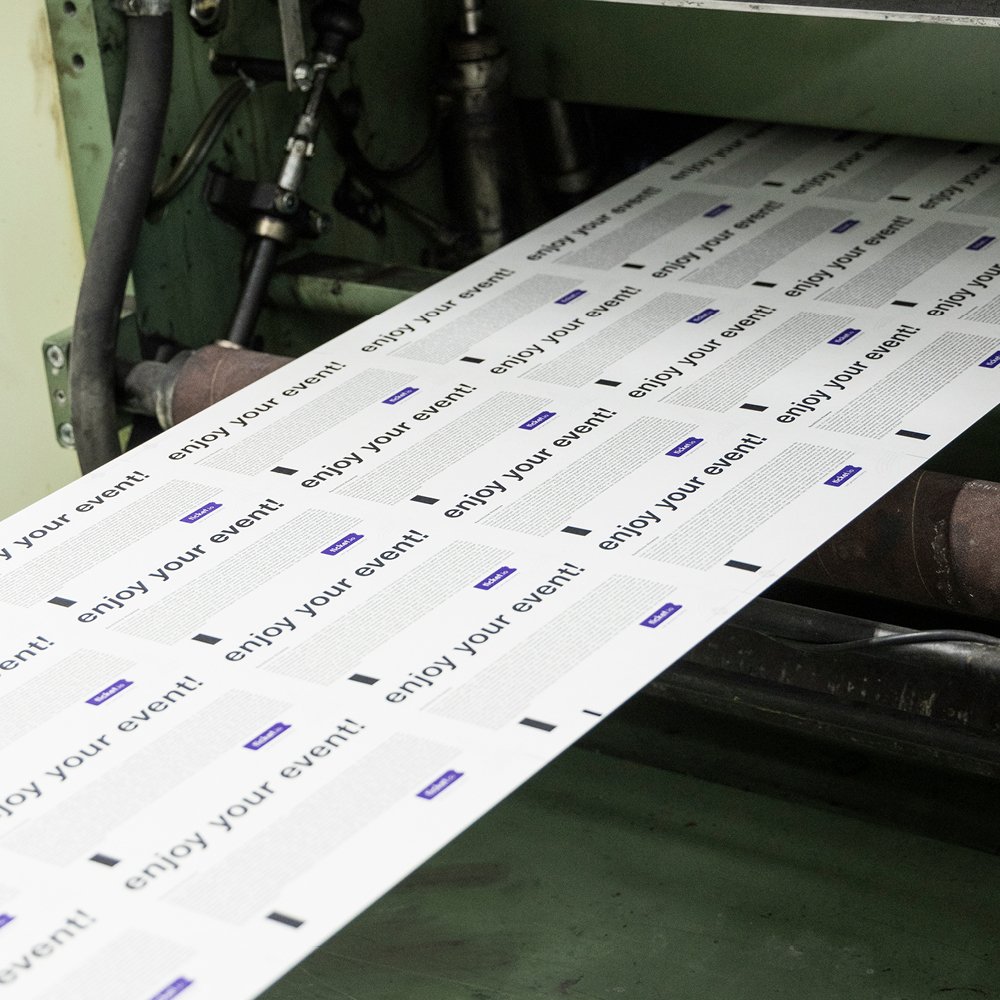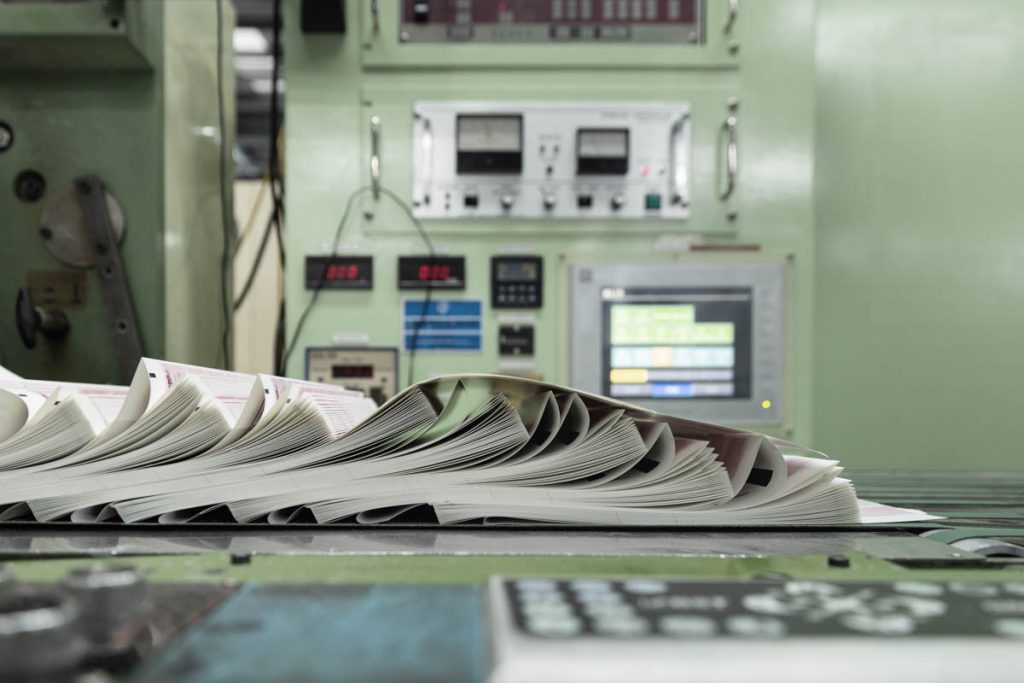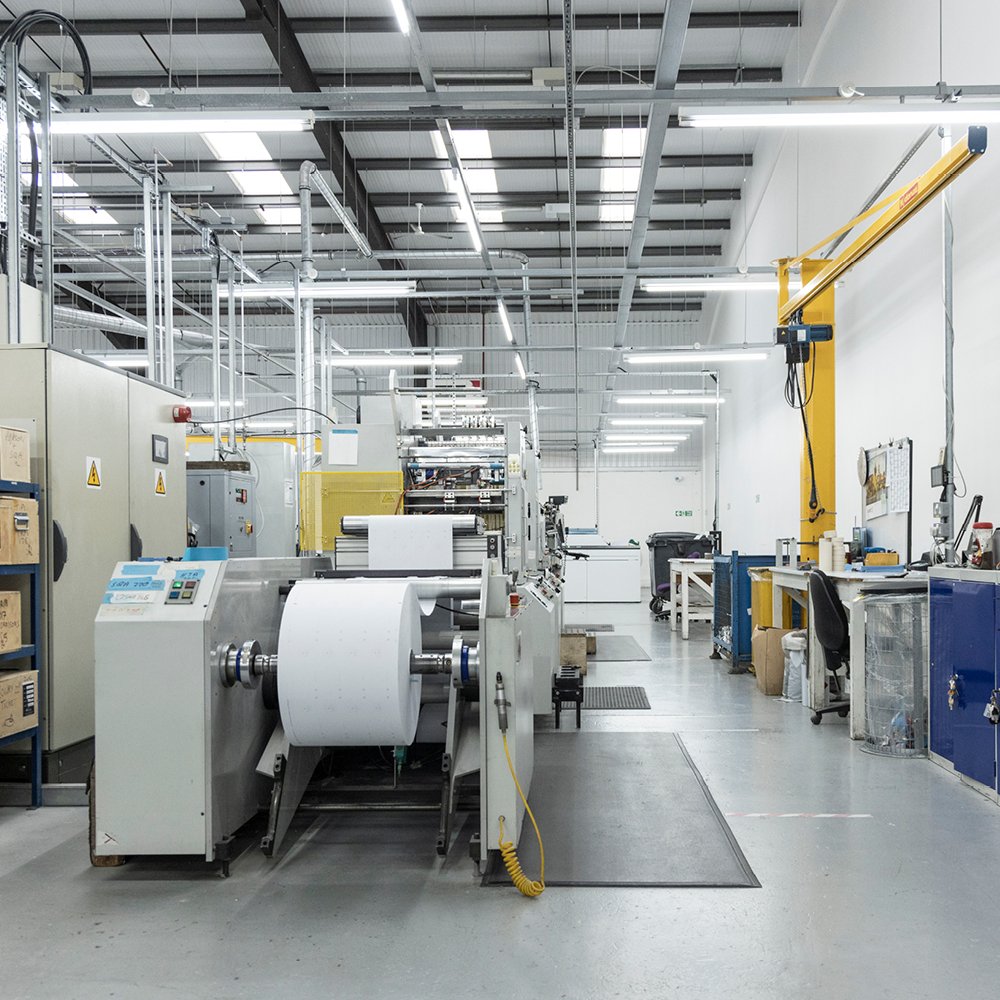In the most basic terms, security printing is a process that achieves layers of security features within a printed document. Why is this done? Typically, security print protects against fraud, forgery, counterfeiting and tampering. Examples of items printed in this way include documents of high personal sensitivity such as passports and certificates, also tickets, product authentication labels, tamper-evident labels, identity cards, postage stamps and more, right through to highly specialised and secure tokens such as banknotes. Security printing uses highly specialised equipment and carries a high-cost-and-technology barrier to entry, making it a relatively exclusive market.
It is important to note that specific applications and circumstances require differing levels of security. So how is this security achieved?
Security features appear in three modes:
- Overt (a feature that is clearly visible upon inspection with the naked eye)
- Covert (invisible to the naked eye and requiring an inspection device such as a UV light source or magnifier)
- Forensic level (needing very specific tools to prove its presence).
Examples of covert security features might be ultraviolet images or hidden messages within text. Overt examples include holograms and coloured inks. Forensic level features will be used in highly sensitive documents and include components verified by a specific device that can prove their presence, often to support evidence in a legal case.
Depending on the security feature chosen, the features may either be contained within the substrate (the material that the image will be printed on, e.g., paper or polymer), applied during the printing process or applied to the document in the latter stages of production.
One or any combination of these security layers may be used. Let’s take a look at each in turn.
Substrates
Our focus at Kalamazoo is paper, including self-adhesive materials. Choosing the right paper for your document is critical – paper can provide an important layer of security.
Watermarked Paper
A watermark in the paper can be held up to the light and instantly viewed with the naked eye, verifying the document as genuine. This can be a watermark design chosen from the paper supplier’s standard product offering or a bespoke design.
Ultraviolet Dull Paper
Ultraviolet dull security paper enables invisible ultraviolet bright ink to be printed as a security feature. This ink then shows up under an ultraviolet lamp. This substrate can also contain other security features.
Solvent Sensitive Paper
This type of paper will change colour if attacked with solvents. Solvents can be used by criminal parties in an attempt to remove or alter data from a document.
Paper with Visible and Invisible UV Fibres
Paper can be produced with fluorescent fibres which display overtly as specific flecks within the paper and, if the paper is exposed to a fluorescent ultraviolet lamp, replay as brightly coloured threads.
Inks
The type of ink used depends upon the security requirement. Does the document require protection from alteration, from duplication, or is an instant authentication required? Depending on the application it may be advisable to have both overt (visible to the naked eye) and covert (not visible to the naked eye) security features.
Aqua-Fugitive Ink
Some data can be altered using water or a water-based solution, so there are major benefits to protecting a document from this abuse. Aqua-fugitive ink will smudge and display signs of attack if in contact with water/ a water-based solution. This type of ink can also have properties that fluoresce after attack, making the attacked area glow under a UV lamp to provide further evidence of abuse.
Solvent Sensitive Ink
Solvents are often used to remove data from documents in order to alter details. Solvent sensitive ink will smudge when attacked with solvents, showing instant visibility of the attack and allowing corrective action to be taken.
Invisible (Ultra Violet) UV Ink
This ink can be used to print any design or message in a way that is invisible to the naked eye but can be clearly detected using a UV lamp. This covert security feature allows the correct personnel to verify the document as genuine whilst also guarding against the creation of fake documents.
Thermochromic Ink
This heat sensitive ink changes colour when temperatures increase or decrease, meaning efforts to reproduce documents can be easily detected.
Time Reactive Ink
Time reactive ink looks and feels like any other permanent ink and will not be obvious to criminals. It is designed to react to chemicals contained within a label that is placed over the ink. The label’s chemicals allow the ink to seep through over a specified time, confirming the authenticity of the document.
Machine Readable Inks
Inks containing machine readable properties give a unique signal that can be detected by purpose-built equipment. This technology provides an instant reading to verify the authenticity of the document or label, protecting against illegal replication of goods.
Attachments and Processes
The printing process itself can create security features to protect the document. As with inks, it is important to understand the capability of each security feature in order to apply the right level of protection. Some features enable instant verification, whilst others show evidence of photocopying or scanning or even prevent copies being taken.
Holograms
Holograms are difficult to replicate and cannot be successfully photocopied – replaying as a primarily black image when attempted. Using holograms immediately gives a document an appearance of quality and security. Security holograms may only be purchased from registered companies who operate under strict manufacturing and ordering protocols to protect the security products marketplace. It is possible to have a security hologram designed to your very own requirements, making it unique to your company. In the same way, it is possible to achieve precise registered images or all-over wallpaper designs for the specific holographic feature.
Micro Printing
Microscopic messages can be incorporated into a document in a way that is invisible to the unsuspecting criminal yet visible to authorised staff using a magnifying glass. The relatively low cost of the inks used makes this a cost-effective security option.
Pantograph Messaging
Pantograph designs hide messages in the background of documents using expert printing techniques. These messages remain dormant until the document is photocopied, at which point the messages becomes visible to the naked eye to display clear evidence of being copied.
Block Out
Originally developed to protect bank notes this feature will not allow a coloured copier built after 1997 to reproduce the document. This is a covert feature and is incorporated into the design of the base security document – therefore not visible to the naked eye. Any attempt to copy the document will give an error message on the copier. This is ideally suited to vouchers, certificates and cheques.
Adhesion Promoting Varnish
A criminal might attempt to remove data by attacking the toner on the surface of the paper with a sharp instrument. This varnish has been developed to adhere the toner to the document and will show signs of tampering if an attempt to remove data has been made. The varnish also glows under a UV lamp, proving its presence and protecting against unvarnished fraudulent copies.
Security Numbering
The numbering and personalisation of documents can include additional security within the ink and also within the encoding processes where a Barcode or QR code may be used. These codes may contain specific control characters and readability elements to assist in the identification of the origin and authenticity of the document.
This provides just a brief overview of the many techniques and features that are available to protect your printed items from fraudulent abuse. Our experts know security print inside out and have the experience to recommend appropriate levels of protection for your specific print application. The good news is that robust, proven security print techniques are protecting the authenticity of millions of documents and items each day across the globe. Please do get in touch to find out more.



